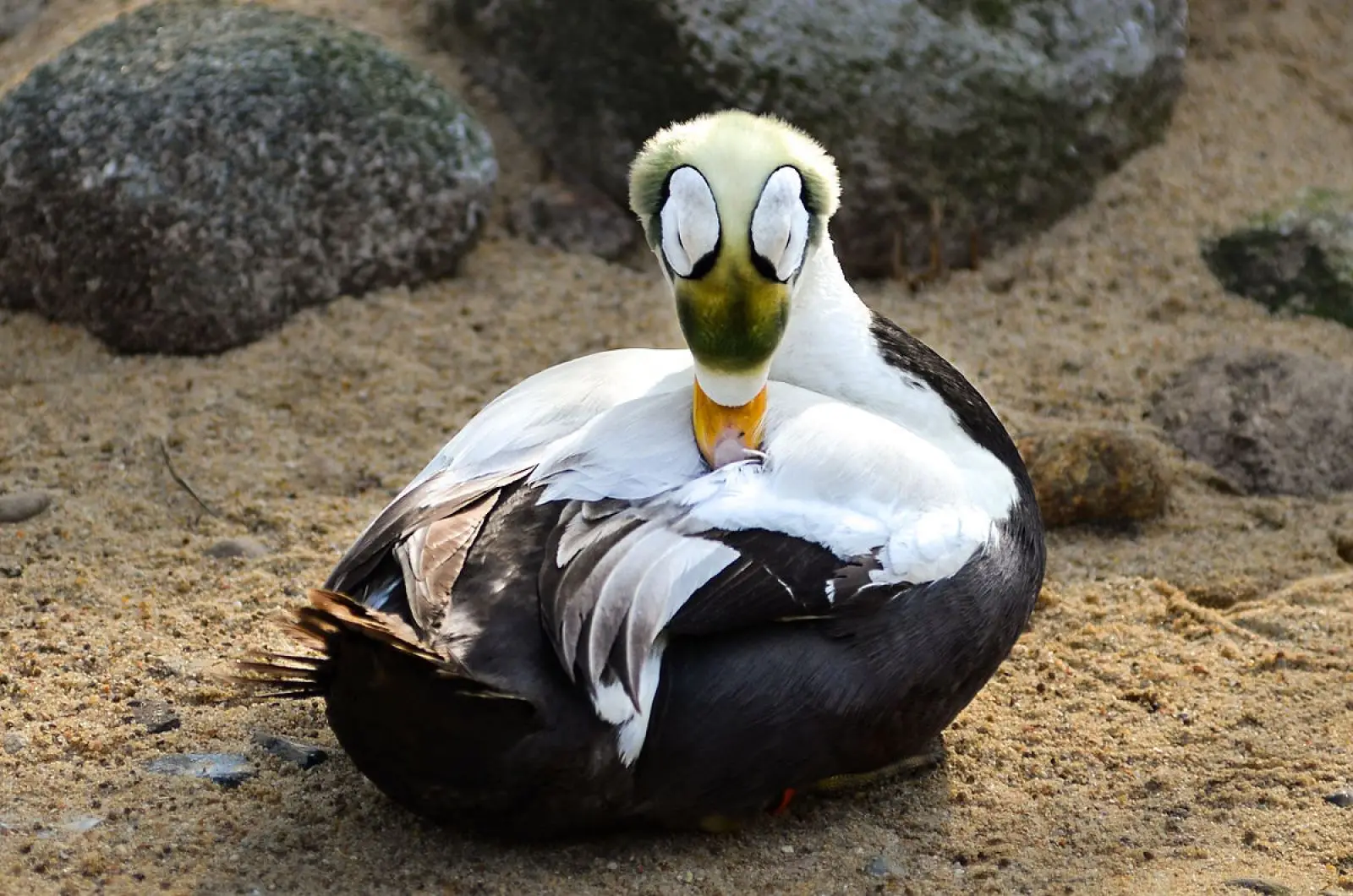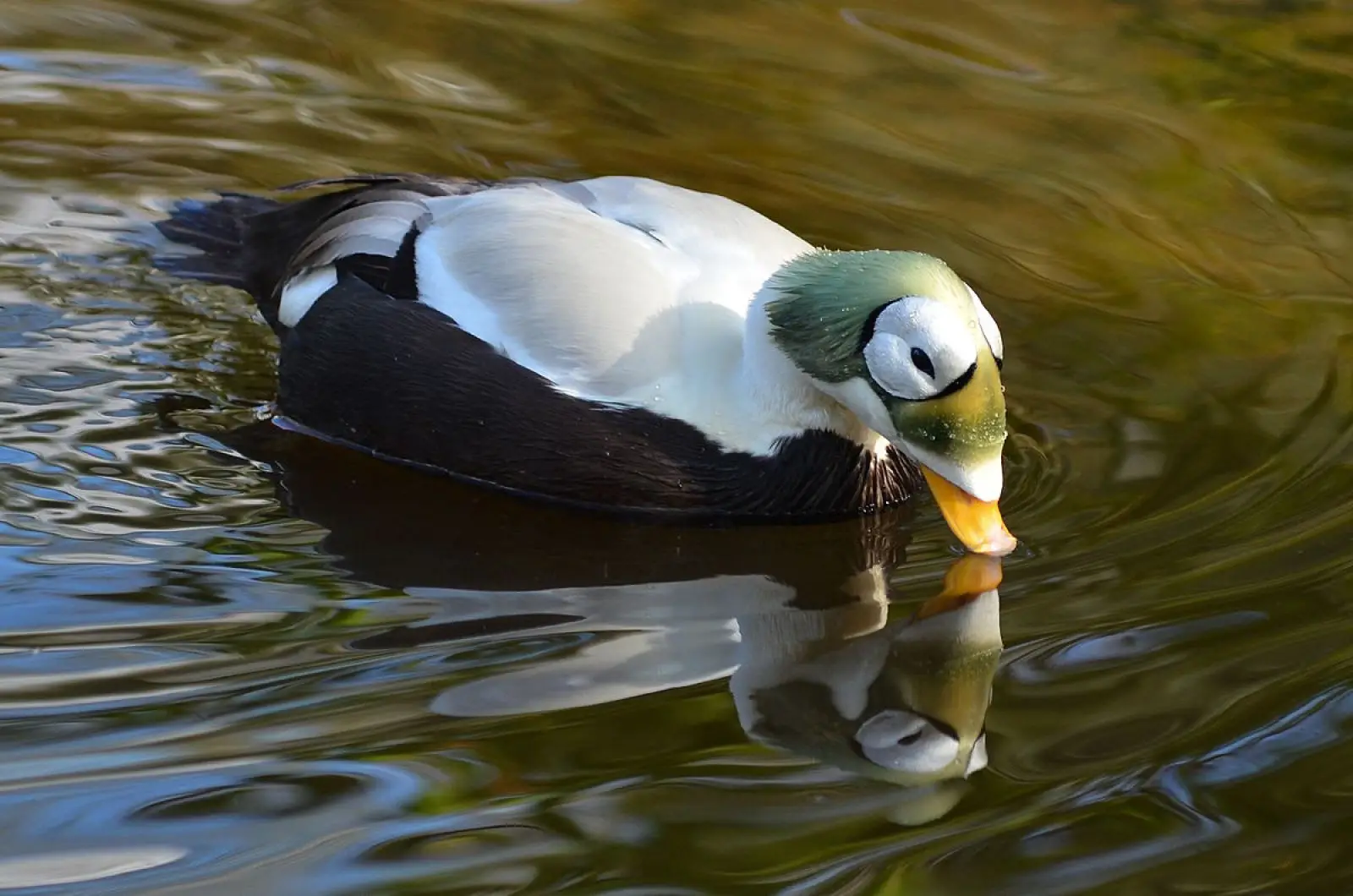The spectacled eider, scientifically known as Somateria fischeri, is a striking sea duck known for its distinctive appearance. Males display a vibrant plumage with a mix of black, white, and iridescent green, and their most notable feature is the white “spectacles” around their eyes. Females, in contrast, have a more subdued brown coloration with subtle patterns, helping them blend into their Arctic habitat. These ducks are medium to large, with males generally measuring between 52 to 57 cm (20 to 22 inches) in length. Their unique coloring and patterns make them easily identifiable, especially during the breeding season when males are in full display.

Spectacled eiders are primarily found in the Arctic regions, with their breeding grounds located on the coastal tundra of Alaska and northeastern Russia. They prefer wetland areas near freshwater ponds or lakes for nesting. During the winter months, these ducks migrate to marine environments, predominantly the Bering Sea and adjacent waters. Here, they gather in large flocks, often on sea ice or in open water areas known as polynyas. Their ability to adapt to both terrestrial and marine environments showcases their resilience and survival skills in the harsh Arctic climate.





Spectacled eiders are diving ducks, adept at foraging underwater for their food. They primarily feed on mollusks, crustaceans, and marine invertebrates, diving to depths of several meters to find their prey. Their diet is crucial for their survival, especially during the cold months when food is scarce. The ducks’ migratory patterns are closely linked to their feeding grounds, ensuring they have access to abundant food sources. Their behaviors, from nesting in the tundra to wintering in the sea, highlight the spectacled eider’s remarkable adaptability and the critical need for conservation efforts to protect their habitats.